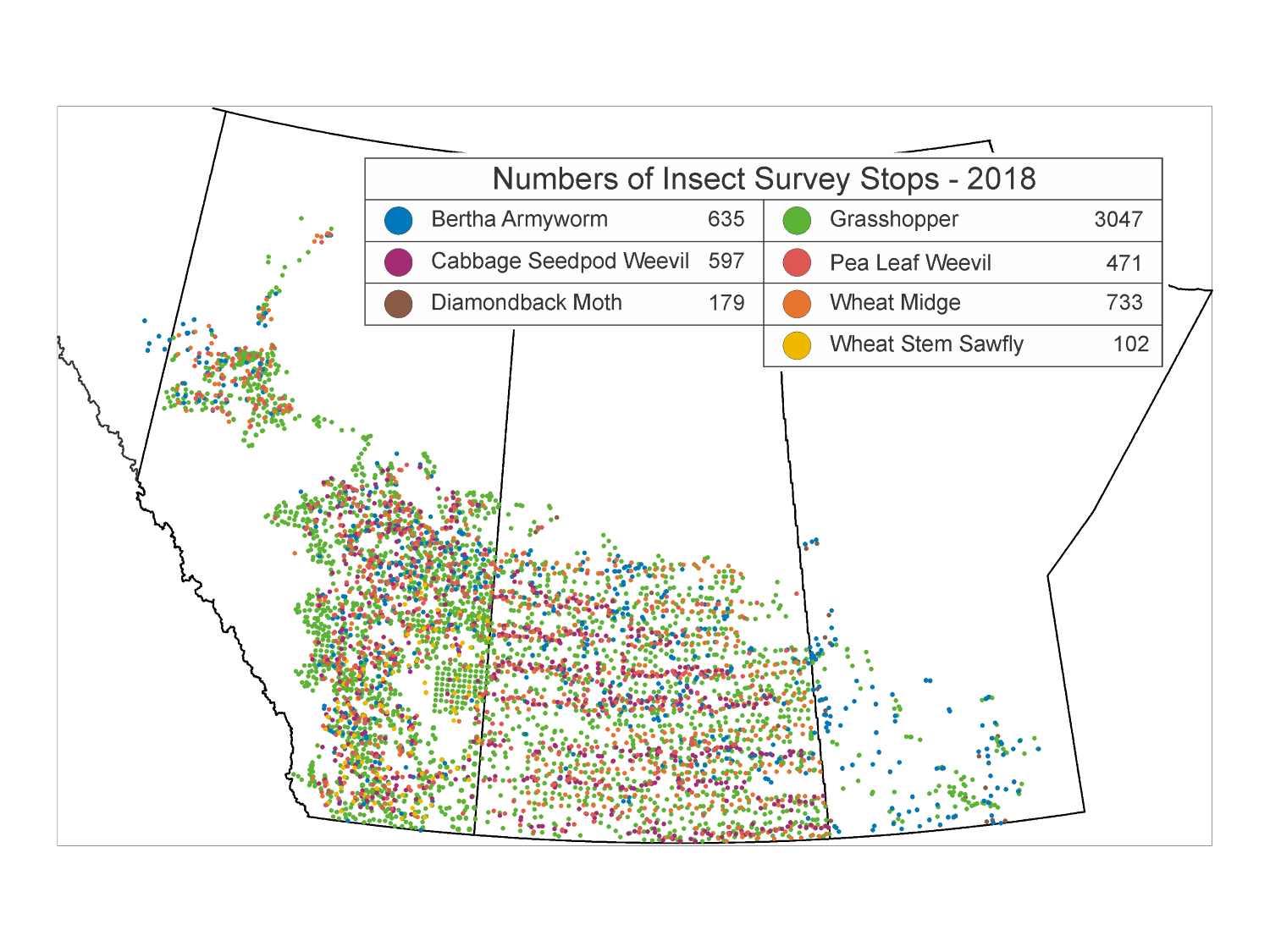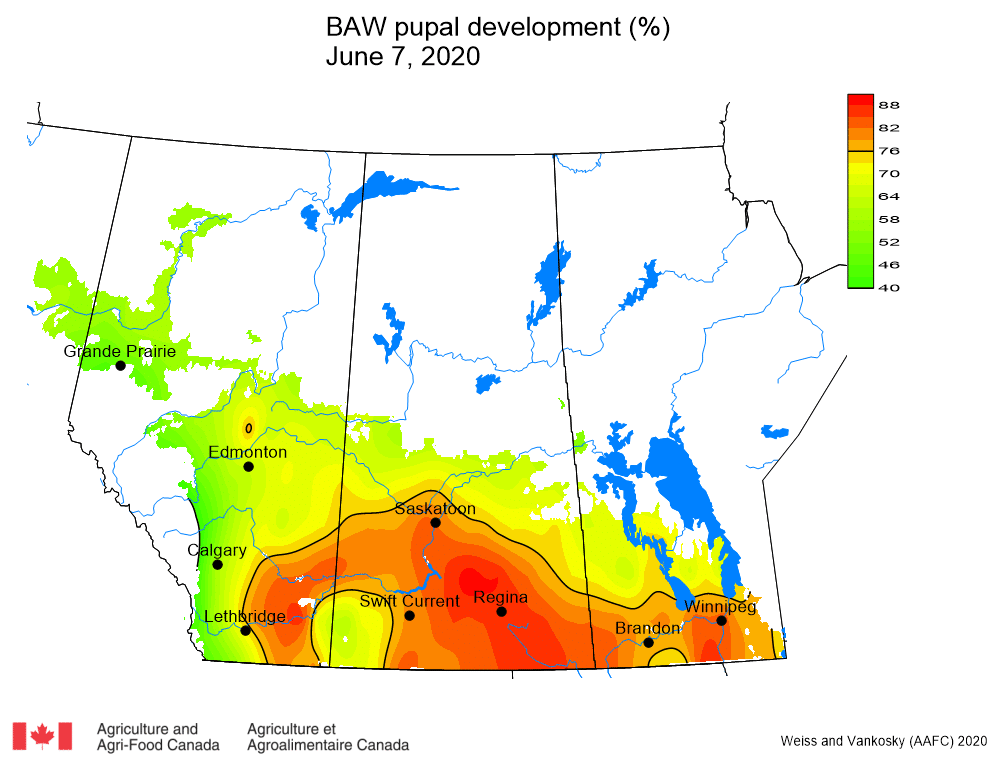Key Result
The Prairie Pest Monitoring Network (PPMN) provides forecasts, risk maps and monitoring protocols for crop pest insects across Western Canada. It also provides a free weekly update. Anyone can subscribe at Prairiepest.ca.
Project Summary
Overview
This 5-year project led by Dr. Olfert and Dr. Vankosky provides ongoing funding for the Prairie Pest Monitoring Network (PPMN). The concept of a coordinated insect surveillance program for the Prairies first took shape in 1997. Since then, the PPMN has been involved in coordinating and conducting population monitoring of insect pests of field crops. Farmers, agronomists and extension staff can use PPMN reports to better understand where and when crops may be affected.
The PPMN is comprised of field crop entomologists who conduct research and actively monitor insect pest populations. It includes researchers from Agriculture and Agri-Food Canada, Manitoba Agriculture and Resource Development, Saskatchewan Ministry of Agriculture, Alberta Agriculture and Forestry, and university researchers. Industry stakeholders provide regular input and valuable insight at annual PPMN working group meetings.
Diamondback moth
One service the PPMN provides is to use wind trajectory models to predict the arrival of diamondback moths (as well as aster leafhoppers) from their overwintering areas in the United States.
They use estimate arrival dates– a “biofix” date – to predict how many generations of diamondback moth there could be in a year. The 2020 model had a biofix date of May 15. Diamondback moth densities generally increase with increasing numbers of generations. The PPMN estimated that western Alberta had two generations of DBM and southeastern Saskatchewan and most of Manitoba had four generations as of August 17, 2020. When compared to historic averages, these results indicate that there was an elevated diamondback moth risk in 2020.
Bertha armyworm
In its weekly updates, PPMN provides information about the development of bertha armyworm pupae to estimate the timing of adult emergence. Collaborators use this information for setting up pheromone traps to monitor bertha armyworm moths. After the traps are up, the PPMN weekly update provides links to the provincial websites, as they provide (nearly) real-time maps of cumulative trap catch and thus provide an estimate of regional risk.
See the forecast maps and sign up for the weekly updates at Prairiepest.ca.







